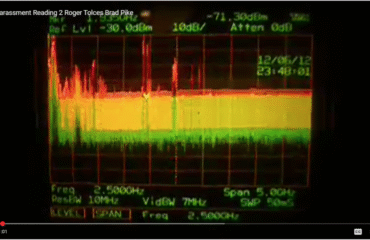
Megaphone Hoax
🔊 Some Clarification on Megaphones and “Implant Detection” Claims
Recently, some posts have been circulating in TI forums and social media suggesting that megaphones can be used to detect covert implants, especially when users report hearing high-pitched squealing or strange noises near their heads.
Let’s take a moment to clarify what’s actually happening, from an acoustic and engineering standpoint.
⚠️ Why This Doesn’t Work
A megaphone is not a detection device.
It’s a simple sound amplification tool, designed to project audio outward. A typical megaphone contains:
- A microphone
- A basic amplifier
- A loudspeaker
That’s it.
Megaphones:
- Do not scan for signals
- Do not detect implants
- Do not measure EM radiation or RF energy
- And cannot interface with internal electronic devices
If you hear a squeal while using one near your head, you’re not detecting a signal — you’re triggering acoustic feedback.
🔁 What Is Acoustic Feedback?
Acoustic feedback is the classic high-pitched squealing sound caused when a microphone picks up audio from a speaker it’s connected to and then re-amplifies it in a loop.
This feedback loop happens when:
- The microphone is too close to the speaker
- The volume is too high
- The environment causes sound to reflect back into the mic
📌 Example:
Hold a megaphone too close to your mouth or ear while it’s on — and you’ll almost always get feedback. That’s physics, not implants.
📚 Technical References
These reliable sources explain the physics behind acoustic feedback and audio systems:
- National Instruments – What Is Audio Feedback?
- Shure – Understanding Audio Feedback
- MIT OpenCourseWare – Fundamentals of Acoustics
Not one of them suggests megaphones are capable of implant detection — because they simply don’t have the hardware.
🛰️ What Would You Need to Detect Implants?
If implant-like tech were present and emitting RF or telemetry signals, you would need:
- A real spectrum analyzer
- A near-field EM probe
- Or a high-sensitivity wideband RF receiver
These tools can detect real RF transmissions — not feedback loops from cheap audio circuits.
🧠 Why This Matters
It’s completely understandable that TIs are trying everything they can to find answers. But as a community, we need to:
- Stick to real physics
- Avoid self-reinforcing myths
- And use tools that match the technology we’re trying to detect
A megaphone is not a diagnostic instrument. It’s not a probe. It’s not scientific evidence.
Let’s stay critical, stay scientific, and keep helping each other with verifiable methods.
🔍 Final Thought
“Just because a tool makes a weird noise doesn’t mean it revealed a hidden truth. Sometimes… it’s just doing what it was designed to do.”

